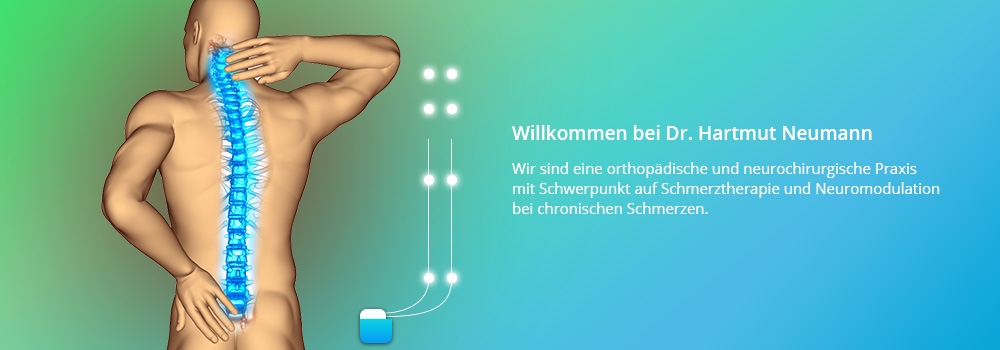Polyneuropathy
Illnesses of the peripheral nervous system that affect several nerves are called polyneuropathy.The pains and paraesthesia can be either in the extremities (distal) – the hands and feet – or, much more rarely, near the body (proximal). There are both symmetrical and asymmetrical forms, but several peripheral nerves are always affected. Over the duration of the illness, the distribution of the sensory complaints is occasionally described as “glove and stocking” distribution. The areas of the body affected experience, among other symptoms, a very painful burning sensation, tingling, numbness, and paraesthesia, such as feelings of heat, cold, swelling and tightness. Often, these unpleasant sensations are accompanied by peripheral, atrophic (the muscle becomes thinner and deteriorates) and symmetrical paralysis.
These illnesses have many possible causes, which is why the therapy is targeted towards the underlying condition. In the case of a bacterial infection such as borreliosis (after a tick bite), the first step to be taken is treatment with antibiotics. In the case of neuropathy that is caused by alcoholism, giving up alcohol and taking vitamin B1 supplements both improve symptoms. In the case of diabetic polyneuropathy, it is important that the blood sugar level is kept constant, with alpha lipoic acid sometimes used for this purpose. Depending on the underlying illness, motor, sensory or autonomic nerves may be affected individually, together or as a main focus.
In many cases, administering non-opioid painkillers for neuropathic pain proves ineffective, which is why different medicines are combined, for example, to treat epilepsy (anti-convulsants) or depression (anti-depressants). Non-medicine-based pain management therapy is administered using so-called transcutaneous electrical nerve stimulation (TENS). If this leads to no improvement, our patients are also offered neurostimulation methods such as spinal cord stimulator implants (SCS). Patients with pain that is resistant to therapy are able to significantly improve their quality of life thanks to such measures.

